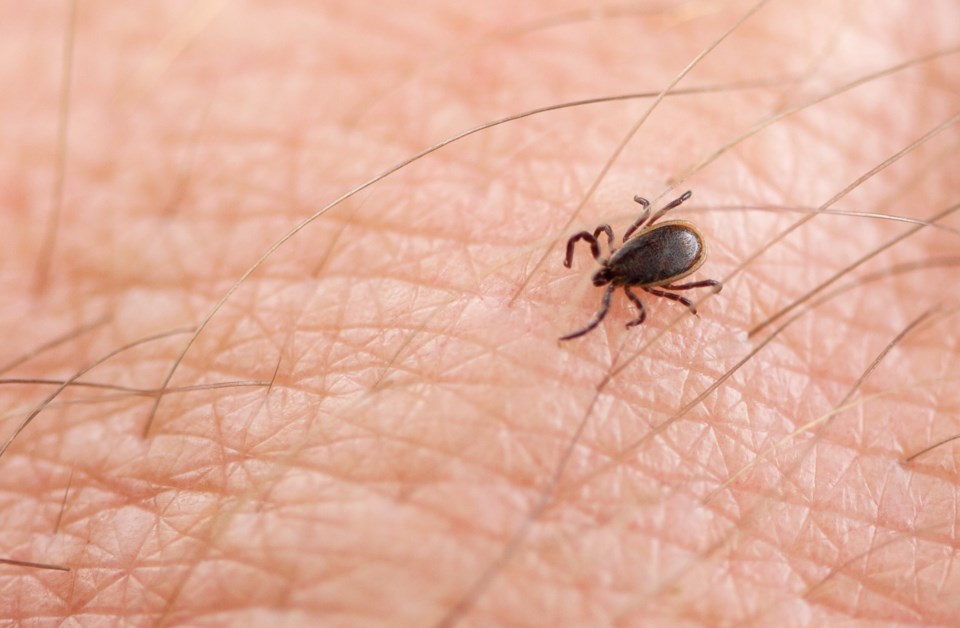The Northwestern Health Unit will investigate the prevalence of ticks carrying the bacteria that causes lyme disease, on an island on Lake of the Woods.
The decision follows the recent publication of a report prepared by a member of Lyme Ontario that points to Corkscrew Island as the area with the highest known rate of infection in Canada.
Lyme Ontario is a volunteer charitable organization that offers support to lyme disease patients and promotes public awareness of the disease which, if untreated, can affect a person's joints, heart and nervous system, resulting in long-term health problems.
The results of Fergus, Ontario research scientist John Scott's work on Corkscrew Island are published in the International Journal of Medical Sciences. After three years of study, Scott found that the adult blacklegged tick (deer tick) population on the island had a 73 per cent infection rate. "It's extremely high, the highest ever reported in Canada," Scott said, adding that three different laboratories all came up with basically the same results. "I was quite surprised, I didn't think it would be that high at all."
As to why the infection rate is elevated, he said he doesn't know exactly why, but he believes small-mammal hosts on the island are very compatible with the organism. "So they're holding it effectively in nature. .. There's a myth out there that you need to have white-footed mice to have a very efficient system in nature to hold the infection, but there's no white-footed mice there." Scott said that deer mice, northern short-tailed shrews and some other small mammals on the island are picking up the infection when any immature blacklegged ticks bite them.
Scott himself has been treated for lyme disease for years, saying he first became symptomatic about three decades ago. He said it's a serious public health risk which he feels health officials across Canada have not done enough to warn the public about. "We have a very serious problem with recognition within the medical community and taking a firm hold on this."
The medical officer of health for the Northwestern Health Unit, Dr. Kit Ngan Young Hoon, said Scott's research has provided "useful" information. Young Hoon told tbnewswatch.com that her agency plans to conduct tick surveillance on Corkscrew Island next spring, and may look at neighbouring areas as well. "The report...has highlighted that maybe there's something that we wouldn't have originally found out," she said.
"It's useful ... to have a sense if there's a high-risk area within our region, even if it's on an island that might not be heavily-frequented by the public."
Tick surveillance can be conducted by dragging a large piece of white fabric through a grassy area, then sending any ticks that attach themselves to the cloth to a lab for analysis.
Young Hoon said lyme disease is an important issue for the health unit. Besides conducting surveillance for ticks, she said, the agency provides information to the public about risk and prevention. While the risk of getting lyme disease is generally low, Young Hoon said people still need to take care to minimize the chance of being infected.
Last year, only one tick out of the ones that were either captured on a cloth or turned in by the public tested positive for the bacteria. Young Hoon said fewer than five cases a year of human infection are typically reported within the jurisdiction of the Northwestern Health Unit, an infection rate she described as probably average for Ontario.
However, some locations in the Rainy River district are among several areas of Ontario (most are in the province's south) where lyme disease bacteria is classified as endemic.
The Thunder Bay District Health Unit says most ticks within its jurisdiction are harmless, and the risk of getting lyme disease is low. However, because there are deer ticks in the area that do carry lyme disease, it continues to advise people to take measures to prevent tick bites.
John Scott continues his own research on lyme disease in the Kenora area, and expects to submit his next set of findings for publication shortly. He said the report will look at different tick species where the infection has turned up, and will show that "it's cycling effectively in the wildlife in that area."
